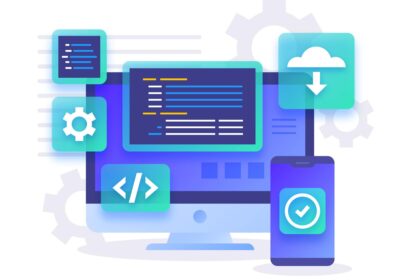In the fast-paced world of software development, it is all about performance. The need for more complex applications and higher user expectations necessitates the fact that software should be able to withstand huge volumes of traffic, transactions, and data. Here comes the role of stress testing.
This means that stress testing is an exercising process that tests a system beyond its normal operational capacities to identify any potential weakness and ensure graceful handling during overload conditions. Though being an essential practice for both robustness and reliability, stress testing does pose technical and organizational challenges. The following blog post will enumerate some of the major stress-testing challenges in software development for organizations.
Understanding the True Limit of the System
The most challenging part of stress testing is to define what “stress” is on your system. The objective of stress testing is to understand how a system behaves under extreme conditions, but defining and simulating such conditions is rather elusive.
- Realistic Traffic Simulation: While a good level of traffic simulation must actually be stressful, stress testing might face the challenge of defining exactly which level of traffic would overload a system.
- What is a “breaking point”? A breaking point for one system may be far from a breaking point for another. For example, some systems can take extreme loads for a short time but break down over time. To find these limits would require extended periods of monitoring and testing in order to accurately simulate a variety of failure modes.
Solution: Collaboration with product owners, system architects, and operations teams to gain insights on possible bottlenecks and high-stress scenarios. Combine real-world traffic data, user behavior analysis, and system metrics to produce an accurate stress scenario.
Complex Test Environment Setup
Perhaps the most difficult part of stress testing is creating a realistic environment. Since stress testing simulates extreme load and traffic conditions, it is often necessary to replicate the production environment as closely as possible.
- Infrastructure challenges: Simulating the actual production server, database, network delay, and other third parties can be time-consuming and costly. A scalable yet realistic testing environment is not easy to be set up with cloud and usually takes long periods for setting up.
- Resource Limitations: Heavy traffic simulation is extremely resource-intensive particularly for large applications. It can become a limitation to run stress tests on complex systems.
Solution: There are cloud-based testing solutions and scalable test environments. These make it possible to simulate real-world traffic. Tools such as AWS CloudWatch, Azure Monitor, and other cloud platforms can simulate traffic spikes that do not require large infrastructure.
Correct Measurement and Monitoring
During stress testing, it becomes vital to collect the performance measurements correctly so that a proper bottleneck or failure may be recognized. This calls for proper monitoring of various parameters including:
- CPU and Memory: To check if there are any resource shortages.
- Query performance in the Database: To know how well the queries scale under high load.
- Network Latency and Throughput: To figure out how much data through can be handled by the network.
These metrics are impossible to understand unless it is known where the system fails and why.
Solution: Collect real-time data using advanced monitoring tools like New Relic, Datadog, or Prometheus. Establish distributed tracing and log aggregation tools that will help pinpoint exactly what causes performance issues.
Identifying Bottlenecks and Performance Degradation
Then the question arises in stress testing performance degradation or failure of a system: Where exactly does the bottleneck lie, network, database, or is it an application code problem? Determining this usually requires time-consuming processes.
- Data Overload: This test produces data that will run into large volumes. This may make the processes overwhelming while determining which aspect of the system is slow.
- Multiple Failure Points: Stress testing can incidentally bring out multiple issues at once, including slow database queries, slow APIs calls, or memory leaks. This may be tough, sorting and prioritizing these issues to know which one to address first.
Solution: The system is divided into smaller manageable units and profiling tools are utilized to identify and determine performance bottlenecks. Stress tests are applied in phases with focus on one layer at a time such as database, API, or server for a more specific identification of the root causes.
Inadequate Test Data
Realistic test data should be used in stress testing, in order to see the behavior of the system in simulated real-world situations. In practice, that may sometimes be difficult.
- Data Privacy and Security: A lot of test data simply cannot be simply extracted directly from production sources, either because of its sensitive character or because there may not be enough suitable information present. Personal data and financial information, for instance, would need to be appropriately anonymized or masked before any use in tests.
- Data Volume: Many applications require large amounts of data to test the scalability suitably but it takes time and resources to create such large volumes of realistic data for testing.
Solution: Utilize data generation tools that can produce synthetic but realistic test data. Even some testing frameworks enable loading huge volumes of data based on algorithms that imitate actual user behavior without actually having production data.
Time and Resource Constraints
Stress testing is extremely time-consuming and labor-intensive, especially at scale. It involves running tests over long periods to successfully simulate stress conditions, which might come into conflict with the limited time available in the Agile development cycle.
- Short Testing Windows: Agile environments always enforce short sprints by the development teams while testing windows are usually quite tight. Comprehensive stress testing is not always feasible within such a constraint.
- Resource Intensive: Execution of stress tests might consume significant resources in terms of computing power, cloud infrastructure, and skilled people, which may otherwise divert much-needed attention away from other testing activities.
Solution: As an integral part of the larger development lifecycle, plan it and provide ample time to do stress testing. Thereby, the efforts associated with stress testing could be curtailed while integrating them with continuous integration (CI) pipelines in which, tests can be performed incrementally as part of the builds.
Unpredictable Results and False Positives
In other words, results can often be unpredictable while conducting a stress test. One might fail the test for the same system due to the same set of stress conditions but might be running really well on some other stress conditions. That creates lots of confusion especially when performance issues need to be diagnosed and fixed.
- False Positives: At times stress testing may pick out failures or slowdowns which may not be present under actual condition. This means wasted time and resources for an improperly validated false positive.
- Complex Interactions: Different workloads and network conditions along with failure scenarios lead to complex interactions which could not be reproduced in such a manner that may enable consistent reproduction.
Solution: Apply scenario-based testing with controlled stress conditions, thus making a test environment. Results may be validated using real-world usage patterns. In-depth post-test analysis may nullify false positives and declare that performance problems are representative of real failure scenarios in actual usage.
Scaling for the Future
Last but not least, the system needs to be prepared enough for future demands. Notwithstanding the successful stress-test of a system against currently prevailing traffic, the scale of the system needs to be such that it can tackle future growth.
- Scaling Tactics: The tactic for scaling the system has much to do with identifying just how to scale it adequately, whether by adding in more servers horizontally or upgrading existing hardware vertically. All this requires a long-run approach.
- Predicting Future Load: It is very hard to predict future traffic and load conditions from the current data, as it varies with regard to time.
Solution: Scalable architecture should be enforced from the beginning of a software development lifecycle. We should focus on cloud-native solutions and infrastructure able to scale dynamically. Auto-scale features in cloud platforms – for example, AWS, Azure, or Google Cloud – can be used when scaling resources automatically according to the load.
Conclusion
Stress testing is critical to ensure that software can work under extreme conditions. However, it poses a number of challenges, from the creation of accurate test environments to the identification and resolution of performance bottlenecks. Understanding these challenges and using the right tools, processes, and strategies can help software development teams improve their stress testing efforts and build more resilient, scalable applications.
Stress testing is very difficult to perform, but the importance of robust software is huge. If the developer addresses these issues right from the source, the application will definitely be free from any heavy load problem and will deliver a great user experience in all kinds of situations.





